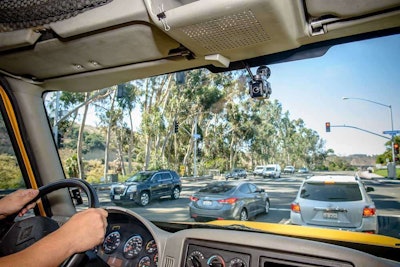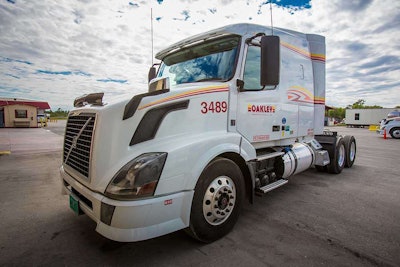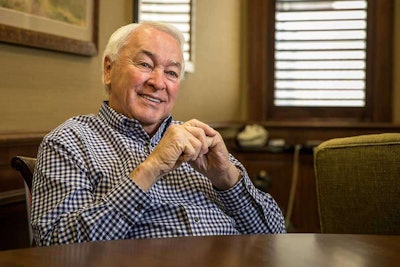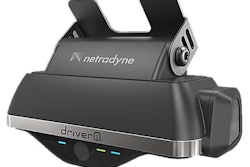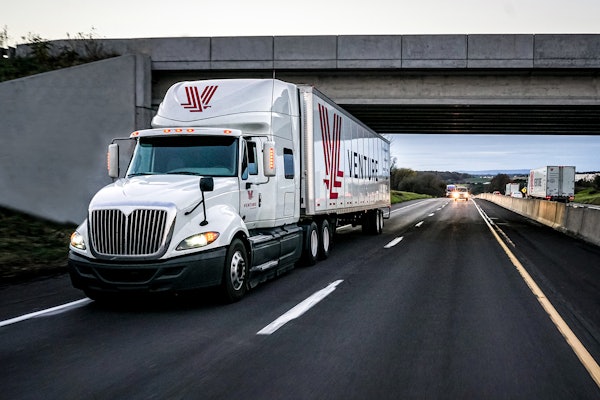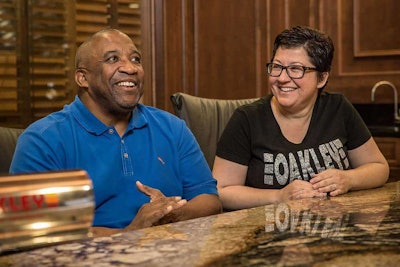 Oakley Transport’s Ron Fargo and Christy Caputo use SmartDrive event video, data and scores to help drivers improve behaviors. Photo by Steven Diaz, courtesy of SmartDrive.
Oakley Transport’s Ron Fargo and Christy Caputo use SmartDrive event video, data and scores to help drivers improve behaviors. Photo by Steven Diaz, courtesy of SmartDrive.As part of implementing SmartDrive, Oakley Transport has created new driver coaching positions in its safety department.
“This technology has now provided a way for us to clearly identify, without any question, what we can do to help someone become a better professional,” says Kelly McDowell, director of safety and compliance.
The company brought in a former marine and retired law enforcement officer, Ron Fargo, who had 10 years of truck driving experience. Fargo worked at Oakley for 10 weeks as a driver prior to becoming a professional driver coaching administrator.
Oakley Transport also gave new coaching responsibilities to Christy Caputo, who expanded her role from managing claims to managing training compliance.
 Photo by Steven Diaz, courtesy of SmartDrive.
Photo by Steven Diaz, courtesy of SmartDrive.Fargo and Caputo use the “response center” in the SmartIQ web portal to decide where to focus their efforts daily. For “top tier” issues like fatigue, improper following distance, use of mobile devices or aggressive driving, they will promptly route drivers into the office or closest terminal to review the event.
“If there are signs a driver may be having an issue staying awake while driving we get on that immediately,” she says.
For less serious offenses, Fargo and Caputo send drivers messages through the Omnitracs system to request a call back. If drivers don’t respond quickly, Fargo says he calls the driver’s cellphone after looking at electronic log records to make sure the driver is on duty but not driving.
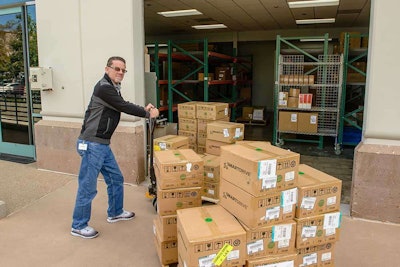 Photo by Tim Peacock, courtesy of SmartDrive.
Photo by Tim Peacock, courtesy of SmartDrive.During the past seven months of coaching drivers, the two have noticed a trend. Driving behaviors tend to become more aggressive the longer drivers are away from home. Oakley’s over-the-road drivers can be gone for up to six weeks at a time.
Using the SmartIQ portal, they monitor driver scores using a 12-week view, a weekly view, and on a daily basis to “stay ahead of” this trend, Caputo says.
Fargo and Caputo also recognize drivers for professionalism. Fargo dedicates Fridays for “good calls” to send drivers messages through the Omnitracs system and to make congratulatory phone calls.
Relationship building is the most important part of coaching drivers, they say, to generate positive response to constructive feedback.
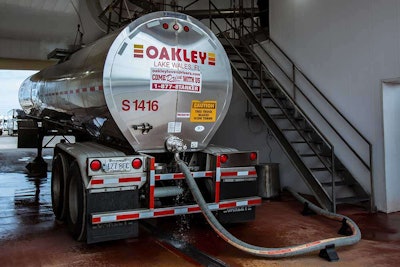 Photo by Steven Diaz, courtesy of SmartDrive.
Photo by Steven Diaz, courtesy of SmartDrive.“They really need that,” Caputo says. “(Drivers) are not just behind the wheel pulling a load. They are human beings that have some other life besides Oakley. They need someone to listen and care.”
Teresa “Terry” Dwyer, a driver for Oakley’s dry van division, has not had a coachable event since the SmartDrive system was installed in her vehicle. “I’ve been out here 12 years. I’ve got a perfect record and I’m proud of it,” she says.
She confesses that before using the technology, “I liked to tailgate a little bit.”
“It makes you honest,” she says. Overall, she is “thrilled” for the protection that video-event recorders provide from the actions of motorists. “I’m grateful for it; I really am.”


